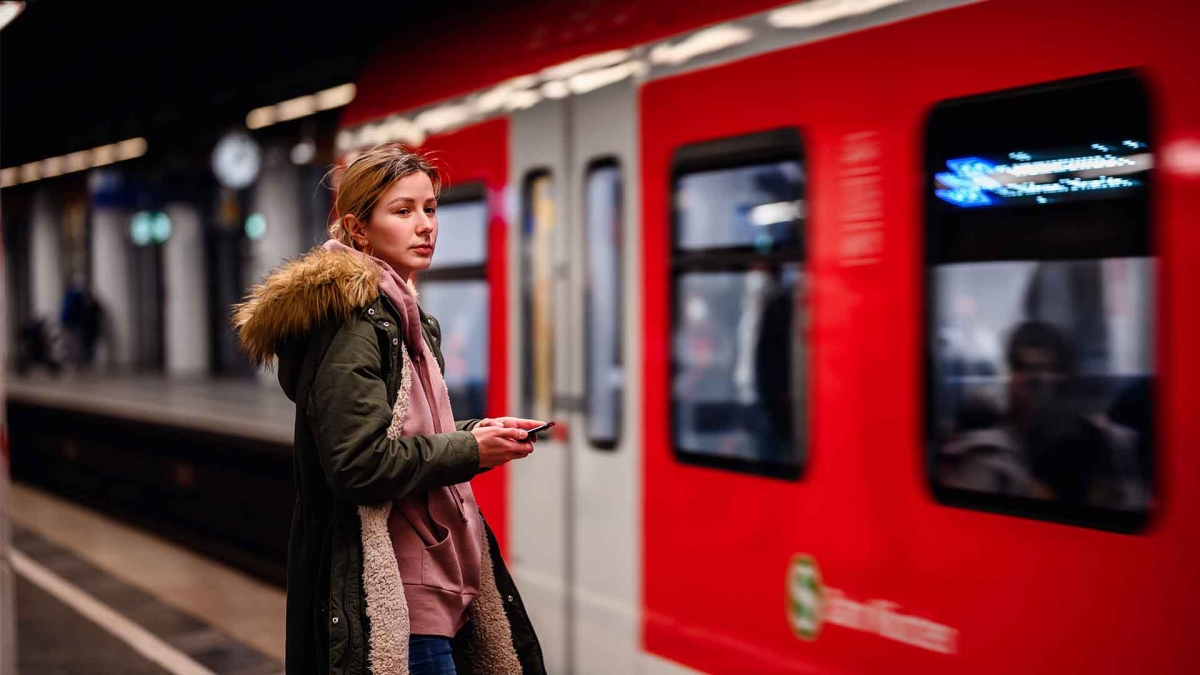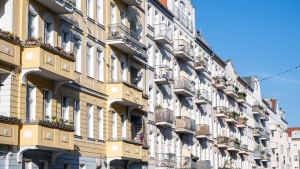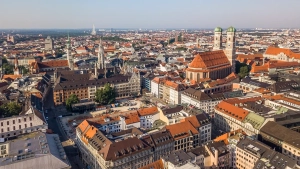Master Public Transportation in Germany: Essential Tips for Students to Navigate Like a Pro
- Master Public Transportation in Germany: Essential Tips for Students to Navigate Like a Pro
- How Can Students Find the Best Public Transportation Routes in Germany?
- What Are the Key Differences Between Regional and City Public Transportation?
- How Can Students Stay Safe While Using Public Transportation in Germany?
- What Are the Benefits of Using a Student Transport Pass?
- How Should You Handle Public Transportation During Peak Hours?
- What Are the Environmental Benefits of Using Public Transportation?
- How Should You Resolve Issues with Public Transportation?
- What Is the S-Bahn and How Does It Work?
- What Is the U-Bahn and How Does It Differ from the S-Bahn?
- How to Use the S-Bahn and U-Bahn Efficiently
- What Are the Peak Hours for S-Bahn and U-Bahn?
- How Can Students Benefit from Using the S-Bahn and U-Bahn?
- What Are the Etiquette Rules for Public Transportation in Germany?
- What Are the Accessibility Features of Public Transportation in Germany?
- How Can I Integrate Cycling with Public Transport?
- What Should Students Know About Using Public Transportation?
- Public Transportation in Germany: Navigating Berlin’s U-Bahn, S-Bahn, and Ringbahn
- FAQ About Public Transportation in Germany
- What's the difference between S-Bahn and U-Bahn?
- How much does transportation cost in Germany for international students?
- How to pay for a bus in Germany?
- What are the 3 common types of public transportation that you will find in German cities?
- Can you use the same ticket for S-Bahn and U-Bahn?
- Are tram and S-Bahn the same?
- Do students get free public transport in Germany?
- What is free for students in Germany?
- What is the cheapest way to get around in Germany?
- Is a 49 euro ticket worth it?
- Can I buy a 49 euro ticket from a machine?
- What happens if you get caught without a train ticket in Germany?
- What does S in S-Bahn stand for?
Navigating transportation in Germany is crucial for students and travelers looking to make the most of their time in this vibrant country. With its efficient U-Bahn and S-Bahn systems, public transportation in Germany offers an extensive network that makes getting around both convenient and affordable. As you prepare to explore cities like Munich, Hamburg, and others, understanding how to utilize these services will be essential.
In this guide, we’ll cover:
- Overview of U-Bahn and S-Bahn Systems: Learn about the key features of these essential transit options, including their routes and how they interconnect.
- Etiquette and Accessibility: Understand the expected behavior on public transport and the accessibility features available for passengers with special needs.
- Cycling Integration: Find out how to combine biking with public transportation, including rules and options for bringing bicycles on board.
- Student-Specific Tips: Explore discounts and strategies tailored for students to save money and manage commutes effectively.
- The Ringbahn in Berlin: Discover how this circular S-Bahn route can simplify your travel across Berlin.
By diving into these topics, you’ll gain valuable insights into how public transportation in Germany can enhance your daily routine, making it easier to navigate cities and integrate different modes of travel. Whether you’re commuting to classes, exploring new neighborhoods, or planning weekend getaways, this guide will equip you with the knowledge you need to make the most out of Germany’s robust transit network.
Public transportation in Germany is not only a means of getting from point A to point B; it’s a gateway to discovering the rich cultural and social fabric of the country. With the right tips and information, including insights specific to navigating Berlin’s transit options, you’ll be able to travel with confidence and efficiency, ensuring a smooth and enjoyable experience throughout your stay.
How Can Students Find the Best Public Transportation Routes in Germany?
Students often need efficient ways to navigate between their accommodation, university, and other destinations. Here’s how to find the best routes:
- Use Transit Apps: Apps like DB Navigator, BVG, and MVV provide route planning, real-time updates, and schedule information. They help in finding the quickest and most cost-effective routes.
- Google Maps: Utilize Google Maps for real-time transit directions and to compare different route options based on time and cost.
- Local Resources: Check if your university has a student portal or local website with transportation tips and recommended routes.
What Are the Key Differences Between Regional and City Public Transportation?
Understanding the differences between regional and city transportation can help you choose the right ticket:
- City Transportation: Includes buses, trams, and subways within a single city or metropolitan area. Tickets are usually cheaper and designed for short trips.
- Regional Transportation: Covers travel between cities and broader areas, often using trains. Regional tickets like the 59-Euro Ticket provide broader coverage and can be more cost-effective for long-distance travel.
How Can Students Stay Safe While Using Public Transportation in Germany?
Safety is a priority when using public transport. Here are some tips:
- Travel in Groups: When possible, travel with friends or fellow students, especially late at night.
- Stay Alert: Keep your belongings close and be aware of your surroundings.
- Use Official Transport Services: Stick to official public transportation services and avoid unauthorized taxis or ride-sharing services that may be less regulated.
What Are the Benefits of Using a Student Transport Pass?
A student transport pass can offer several advantages:
- Cost Savings: Significant discounts compared to single or daily tickets.
- Convenience: Unlimited travel within specific zones or regions, reducing the need to buy tickets regularly.
- Additional Perks: Some student passes come with benefits like discounts on local attractions or events.
How Should You Handle Public Transportation During Peak Hours?
Navigating public transportation during busy times can be challenging. Here’s how to manage:
- Travel Off-Peak: Try to avoid rush hours (typically 7-9 AM and 4-6 PM) to ensure a more comfortable experience.
- Plan Ahead: Use apps to check schedules and avoid crowded times.
- Be Prepared: During peak hours, trains and buses can be crowded. Stand close to doors for a quicker exit and be patient.
What Are the Environmental Benefits of Using Public Transportation?
Public transportation isn’t just cost-effective; it’s also environmentally friendly. Here’s why:
- Reduced Carbon Footprint: Public transit reduces the number of individual cars on the road, lowering greenhouse gas emissions.
- Energy Efficiency: Trains and buses are generally more energy-efficient compared to private vehicles.
How Should You Resolve Issues with Public Transportation?
If you encounter problems while using public transportation, follow these steps:
- Contact Customer Service: Each transit authority has customer service channels for resolving issues.
- Report Problems: Use apps or station kiosks to report any issues with service or facilities.
- Seek Help: If you’re unsure about something, don’t hesitate to ask station staff or fellow passengers for assistance.
What Is the S-Bahn and How Does It Work?
The S-Bahn (Stadtschnellbahn) is a rapid transit system that connects city centers with suburban areas. It’s ideal for both short city trips and longer journeys to nearby towns.
- Definition: The S-Bahn operates on dedicated tracks and extends beyond city limits to connect with regional and intercity trains.
- Features: It provides frequent service, with stops at key urban and suburban locations. S-Bahn trains are designed for longer distances compared to other city transit options.
- Examples: In Berlin, the S-Bahn connects the city with outer districts and neighboring towns. In Munich, it extends to the airport and nearby cities.
What Is the U-Bahn and How Does It Differ from the S-Bahn?
The U-Bahn (Untergrundbahn) is a subway system focused on urban transit within city limits. It operates primarily underground to avoid surface traffic.
- Definition: The U-Bahn serves short to medium-distance travel within cities, with a network of stations throughout urban areas.
- Features: U-Bahn trains are designed for quick, frequent stops within the city, providing efficient travel around key urban locations.
- Examples: In Berlin, the U-Bahn covers major parts of the city, connecting neighborhoods and central locations. In Hamburg, it serves the central and northern parts of the city.
How to Use the S-Bahn and U-Bahn Efficiently
To make the most of the S-Bahn and U-Bahn systems, follow these tips:
- Check Schedules and Routes: Use transit apps like DB Navigator for real-time schedules and route planning. This helps in avoiding delays and managing your travel time effectively.
- Understand Ticketing Zones: Both S-Bahn and U-Bahn operate within different fare zones. Ensure you purchase tickets based on your travel zones to avoid fines.
- Be Aware of Transfers: Many routes require transferring between S-Bahn and U-Bahn lines. Pay attention to station signs and maps to navigate transfers smoothly.
What Are the Peak Hours for S-Bahn and U-Bahn?
Peak hours for both S-Bahn and U-Bahn typically occur between 7-9 AM and 4-6 PM. During these times, trains may be crowded.
- Avoid Peak Hours: If possible, plan your travel outside these peak times to avoid crowded conditions.
- Travel Tips: During rush hours, stand close to doors for quicker boarding and exiting. Be patient and stay aware of your belongings.
How Can Students Benefit from Using the S-Bahn and U-Bahn?
Students can take advantage of several benefits when using the S-Bahn and U-Bahn systems:
- Student Discounts: Check if your student ID offers discounts on monthly or annual transit passes, which can reduce overall transportation costs.
- Safety: Both S-Bahn and U-Bahn systems are generally safe. Remain alert and keep your belongings secure, especially in crowded situations.
- Exploration: Use the U-Bahn for quick trips within the city and the S-Bahn for excursions to nearby suburbs or regional destinations, enhancing your overall experience in Germany.
By understanding the S-Bahn and U-Bahn systems and utilizing these tips, you’ll navigate Germany’s public transportation like a pro, making your student experience more seamless and enjoyable.
What Are the Etiquette Rules for Public Transportation in Germany?
Proper etiquette on public transportation helps ensure a pleasant experience for everyone. Here’s what you need to know:
- How Should I Behave on Public Transit?
- Quiet Zones: Keep noise levels down, especially in designated quiet areas. Avoid loud conversations and phone calls.
- Seats for Priority Users: Respect seats reserved for the elderly, disabled, and pregnant passengers. Offer these seats when needed.
- Personal Space: Avoid encroaching on others’ personal space. Stand clear of doors and avoid blocking aisles.
- What Are the Expectations for Bicycles and Large Items?
- Bicycles: Follow rules for bringing bikes on board. Typically, bicycles are allowed during off-peak hours or may require a special ticket.
- Large Bags: Store large bags and belongings properly to avoid inconveniencing other passengers.
What Are the Accessibility Features of Public Transportation in Germany?
Germany’s public transportation system is designed to accommodate a range of accessibility needs. Here’s an overview:
- What Accessibility Features Are Available?
- Wheelchair Access: Many stations and vehicles offer wheelchair access, including elevators and ramps.
- Assistance Services: Stations and transit services provide assistance for those with mobility challenges. Contact stations in advance if you need help.
- How Can I Request Assistance?
- Contact Information: Use available contact options at stations or transit websites to request assistance or additional services.
How Can I Integrate Cycling with Public Transport?
Cycling can complement public transportation, making your commute more flexible. Here’s how to integrate the two:
- What Are the Rules for Bringing Bikes on Public Transit?
- Bike Policies: Check specific policies for each city and transit line, as rules may vary. Generally, bikes are allowed on S-Bahn and certain U-Bahn lines, often during off-peak hours.
- Bike Compartments: Some trains have designated bike compartments. Look for signs or ask staff for guidance.
- Are There Bike Share Programs Available?
- Bike Share Options: Many cities offer bike-sharing programs, such as Berlin’s Nextbike or Munich’s MVG Rad. These can be a convenient option for short trips or last-mile connectivity.
What Should Students Know About Using Public Transportation?
Students can benefit from various tips and discounts when using public transportation. Here’s what you need to know:
- Are There Student Discounts on Public Transit?
- Discounted Passes: Many cities offer discounted transit passes for students. Check with your university or local transit authority for details on available discounts.
- Student ID Benefits: Some transit systems provide additional discounts or special tickets for students. Always carry your student ID when traveling.
- How Can I Manage Commutes for Part-Time Jobs or Internships?
- Flexible Tickets: Look for flexible ticket options or multi-ride passes if you have an irregular schedule. This can save money and simplify travel.
- Planning: Plan your routes and travel times in advance to avoid delays, especially during peak hours.
Public Transportation in Germany: Navigating Berlin’s U-Bahn, S-Bahn, and Ringbahn
What Are the Main U-Bahn Lines in Berlin?
The U-Bahn in Berlin is a key component of the city’s public transportation system, covering major urban areas with efficient service.
- What Are the Key U-Bahn Lines? Major lines include:
- U1: Runs from Uhlandstraße to Warschauer Straße, covering central and east Berlin.
- U2: Connects Pankow to Ruhleben, traversing through notable areas like Alexanderplatz and Zoologischer Garten.
- U6: Links Alt-Tegel with Friedrichstraße, serving northern and central Berlin.
- U8: Connects Wittenau to Leinestraße, covering diverse neighborhoods and connecting to other transport lines.
- How Can I Use U-Bahn Maps? Familiarize yourself with the U-Bahn maps available on the BVG website or transit apps to navigate efficiently through the city.
How Does the S-Bahn in Berlin Work?
The S-Bahn provides crucial links between Berlin and its suburbs, offering a broader reach compared to the U-Bahn.
- Which S-Bahn Lines Are Essential? Important lines include:
- S3: Connects the city center with southern suburbs.
- S5: Links Berlin with suburban areas to the west.
- S7: Extends to the southern and eastern suburbs.
- S9: Provides connections through the city and to the west.
- What Is the Ringbahn? The S41 and S42 form the Ringbahn, creating a circular route around Berlin that connects various districts and major transit hubs.
What Is the Ringbahn and How Can I Use It?
The Ringbahn (S41/S42) is a circular S-Bahn route around Berlin, providing a convenient travel option for crossing the city.
- How Does the Ringbahn Operate? The Ringbahn loops around Berlin, connecting key neighborhoods and transit points without passing through the central area.
- When Should I Use the Ringbahn? It’s ideal for traveling across the city efficiently or connecting between different S-Bahn and U-Bahn lines. It’s also useful for navigating around the city without entering the central zones.
How Can I Get Real-Time Information for Berlin’s Public Transit?
For accurate and up-to-date information on Berlin’s public transit system:
- Which Apps Should I Use? Use apps like BVG Fahrinfo for real-time updates on schedules, routes, and service interruptions.
- How Do I Understand Fare Zones? Berlin’s public transport operates on a fare zone system. For travel within central Berlin, an AB ticket is usually sufficient. For longer trips or travel outside the city center, purchase tickets based on the required fare zones.
What Are the Peak Hours for Berlin’s U-Bahn and S-Bahn?
Peak hours significantly affect the passenger volume on Berlin’s U-Bahn and S-Bahn systems:
- When Are the Peak Hours? Morning rush hours (7-9 AM) and evening rush hours (4-6 PM) are particularly busy.
- How Can I Avoid Crowds? To avoid the busiest times, try traveling outside of these peak periods. During rush hours, standing near the doors can help with quicker boarding and exiting.
Navigating public transportation in Germany can be a transformative experience for international students and travelers alike. From the bustling U-Bahn and S-Bahn systems in Berlin to the efficient networks across other major cities, understanding how to utilize these services effectively is crucial for a smooth journey. In this guide, we’ve explored the essential aspects of public transportation in Germany, including the differences between the U-Bahn and S-Bahn, the benefits of the Ringbahn in Berlin, and key tips for making the most out of your travels.
Mastering Public Transportation in Germany starts with familiarizing yourself with the U-Bahn (underground metro) and S-Bahn (rapid transit) systems. Each city has its unique layout, but the principles remain consistent. The U-Bahn typically covers urban areas with frequent stops, making it ideal for short to medium distances within city centers. The S-Bahn extends beyond the city, connecting suburbs and neighboring towns, providing a broader travel range. In Berlin, the Ringbahn (S41 and S42) offers a convenient circular route around the city, linking various neighborhoods and major transit hubs without venturing through the central area. This can be particularly useful for commuting across the city or exploring different districts efficiently.
Public Transportation in Germany also comes with certain etiquette rules and accessibility features that enhance the travel experience. Adhering to local etiquette, such as keeping noise levels down, respecting reserved seats, and properly storing large bags, contributes to a more pleasant environment for everyone. Accessibility is a priority, with many stations and vehicles equipped with features like elevators, ramps, and assistance services for those with mobility challenges. Understanding these aspects ensures that your journey is both comfortable and respectful of other passengers’ needs.
For those integrating cycling with public transportation in Germany, it’s beneficial to understand the rules and options available. Many cities allow bicycles on public transit, but policies vary. Typically, bikes are permitted during off-peak hours and may require a separate ticket or fee. Additionally, bike-sharing programs in cities like Berlin offer an alternative for short trips, complementing the extensive public transit network. This integration of cycling and public transport can make your daily commute more flexible and efficient.
Students, in particular, can take advantage of various student-specific advice to maximize their public transportation experience. Many cities offer discounted transit passes for students, and your university may provide additional benefits or special tickets. Managing your commutes effectively—whether for classes, part-time jobs, or internships—can be easier with flexible tickets and careful planning. Utilizing these discounts and options not only saves money but also helps you navigate the city more seamlessly.
As you embark on your journey with public transportation in Germany, remember that real-time information is key to a smooth experience. Use transit apps like BVG Fahrinfo for the latest updates on schedules, routes, and service changes. Always be aware of fare zones and ticket types to avoid any confusion or extra charges.
Bonus Advice: To further enhance your experience, keep a small kit with essentials such as a map, snacks, and a reusable water bottle. Having these items handy can make your travels more comfortable, especially during longer journeys or unexpected delays. If you’re new to the city, don’t hesitate to ask locals or transit staff for assistance—they can offer valuable insights and guidance. Additionally, staying informed about local customs and transit practices will help you adapt quickly and travel respectfully.
For the latest updates, travel tips, and exclusive offers tailored to students and international travelers, consider joining our newsletter. By subscribing to our blog newsletter, you’ll stay informed about the best ways to navigate public transportation in Germany, find out about new discounts, and receive expert advice on making your journey as smooth as possible. Join us today and ensure you’re always up-to-date with the latest transit information and travel resources!
Understanding and effectively using public transportation in Germany not only makes your travels more manageable but also enriches your overall experience in the country. By applying the insights and tips shared in this guide, you’ll be well-prepared to navigate the U-Bahn, S-Bahn, and other transit options with confidence. Enjoy your travels and make the most out of your time in Germany!
FAQ About Public Transportation in Germany
What’s the difference between S-Bahn and U-Bahn?
S-Bahn trains connect suburbs to city centers, mostly above ground. U-Bahn is an underground metro system within cities, offering faster, more frequent urban transit.
How much does transportation cost in Germany for international students?
Costs vary by city and student discounts, but generally range from €50 to €100 per month. Many universities offer semester tickets, providing unlimited travel at reduced rates.
How to pay for a bus in Germany?
You can pay with cash, contactless cards, or mobile apps. Tickets are also available from vending machines at stations and bus stops, or directly from the driver.
What are the 3 common types of public transportation that you will find in German cities?
German cities commonly feature S-Bahn (suburban trains), U-Bahn (metro), and buses. Trams are also widespread in many cities, providing street-level transit.
Can you use the same ticket for S-Bahn and U-Bahn?
Yes, tickets are generally valid across S-Bahn and U-Bahn within specific zones. This integrated system allows seamless transfers between different modes of public transit.
Are tram and S-Bahn the same?
No, trams operate at street level within city areas, stopping frequently. S-Bahn trains run on dedicated tracks, usually covering longer distances between suburban and urban areas.
Do students get free public transport in Germany?
Many students benefit from a semester ticket included in university fees, granting unlimited access to local public transport networks for the duration of the semester.
What is free for students in Germany?
Students often receive free or heavily discounted public transport, library access, and entry to cultural institutions like museums. Many universities offer additional benefits like reduced gym fees.
What is the cheapest way to get around in Germany?
Using public transport with student discounts or regional passes is cost-effective. Cycling is also popular and affordable, with many cities offering bike-sharing programs.
Is a 49 euro ticket worth it?
The €49 ticket provides unlimited travel on local and regional transport networks throughout Germany. It’s ideal for frequent travelers who use public transport across different cities.
Can I buy a 49 euro ticket from a machine?
Yes, the €49 ticket can be purchased at ticket machines, online platforms, or via mobile apps. It offers a convenient option for nationwide travel on public transport.
What happens if you get caught without a train ticket in Germany?
Traveling without a valid ticket incurs a fine, typically starting at €60. Repeated offenses can lead to higher fines and, in rare cases, legal consequences.
What does S in S-Bahn stand for?
The “S” in S-Bahn stands for “Stadtschnellbahn,” translating to “city rapid railway.” It highlights the system’s focus on connecting urban and suburban areas efficiently.
How informative was this article?
Click on a star to rate it!
We are sorry that this post was not useful for you!
Let us improve this post!
What is missing in the article?















